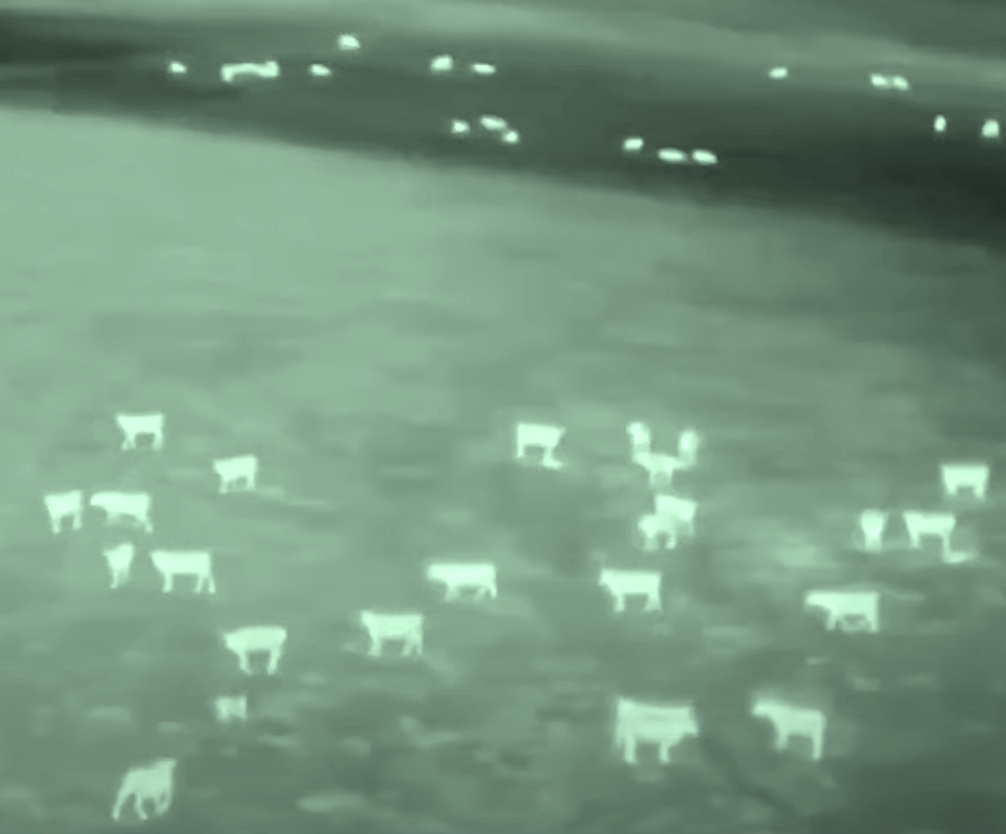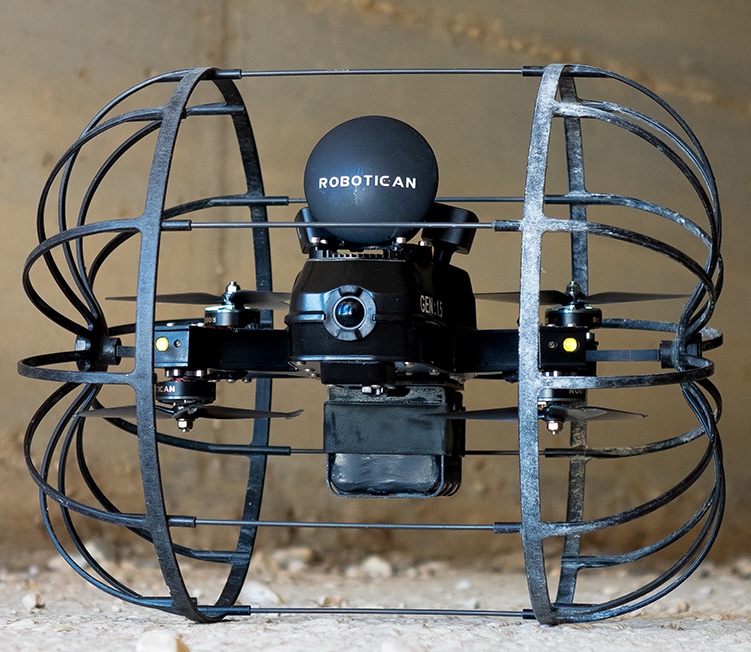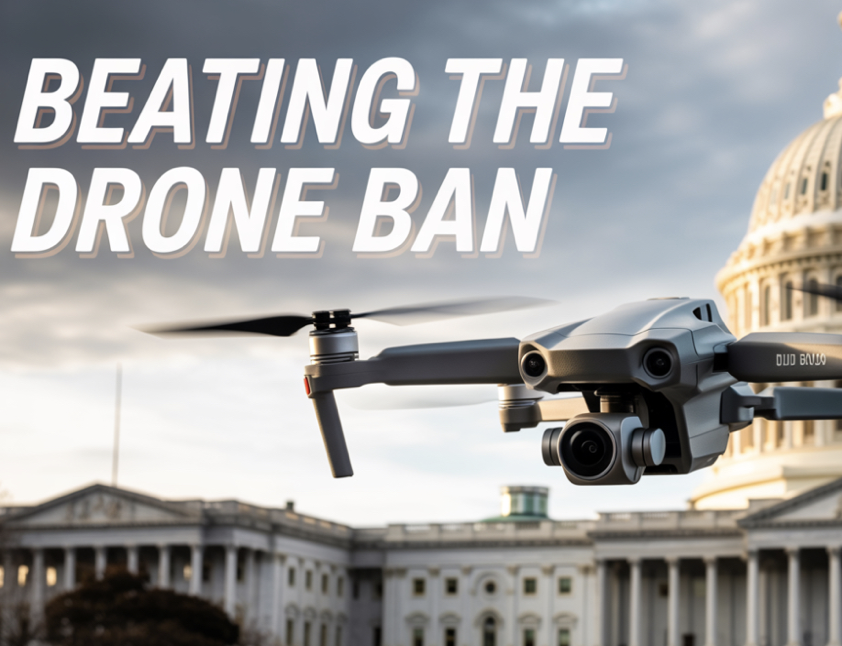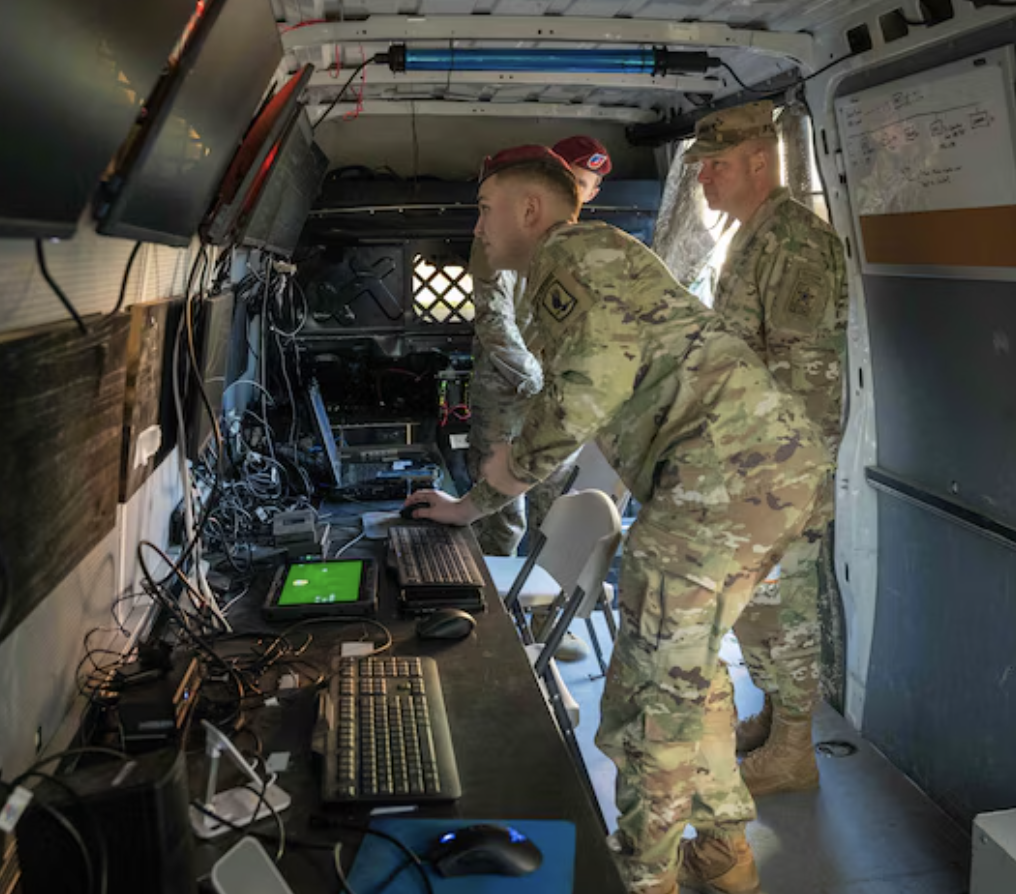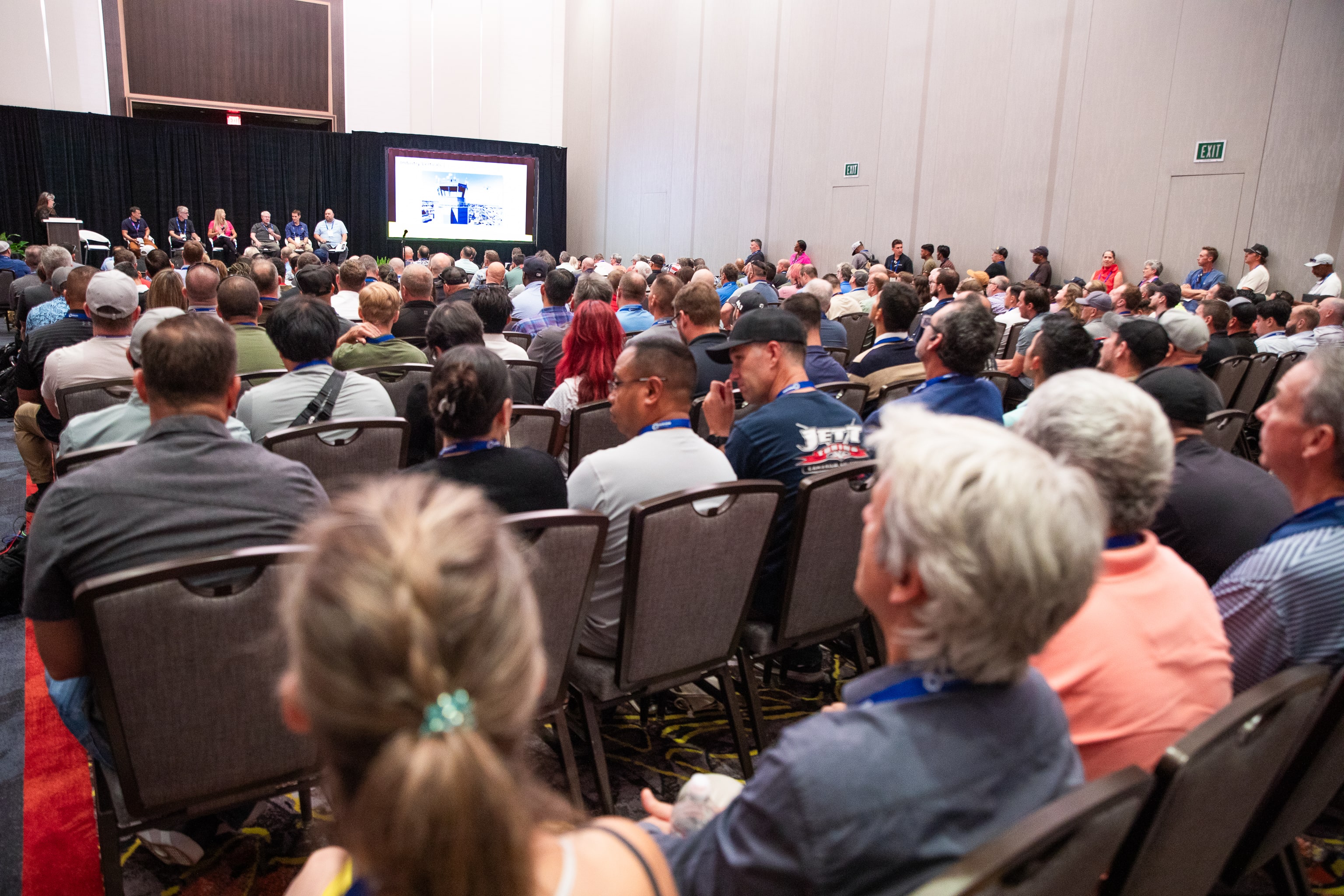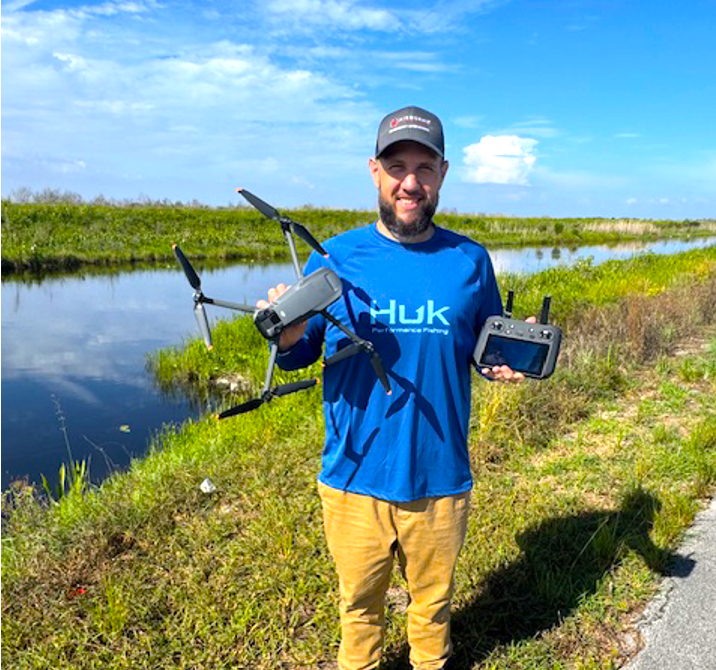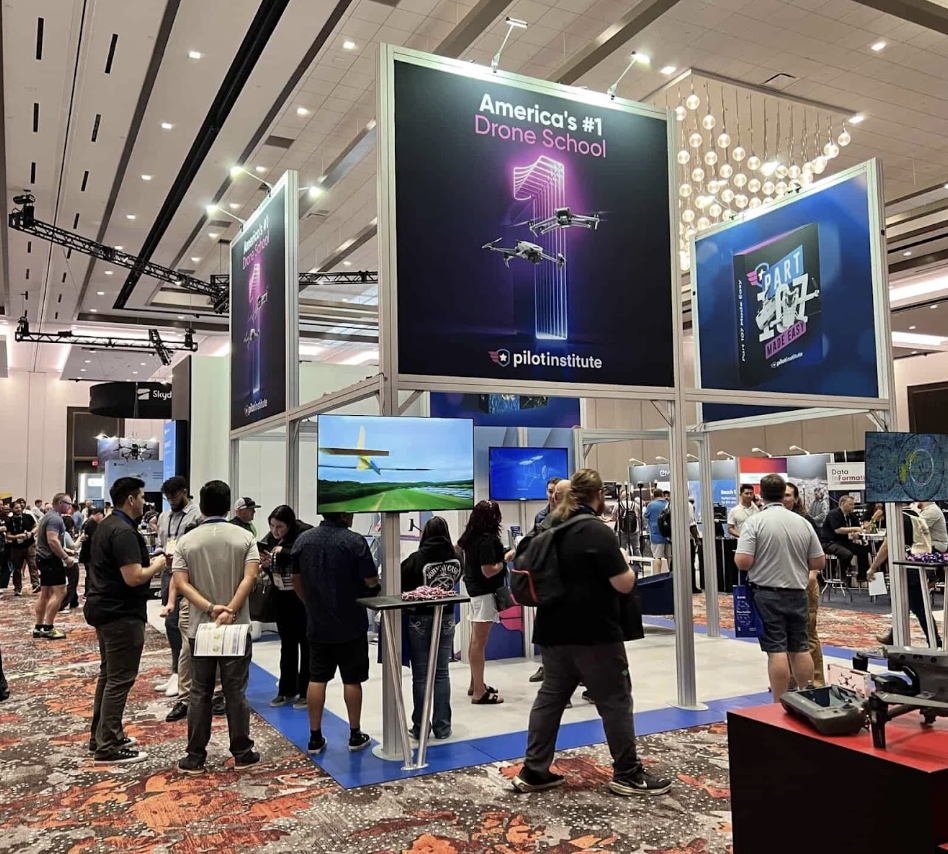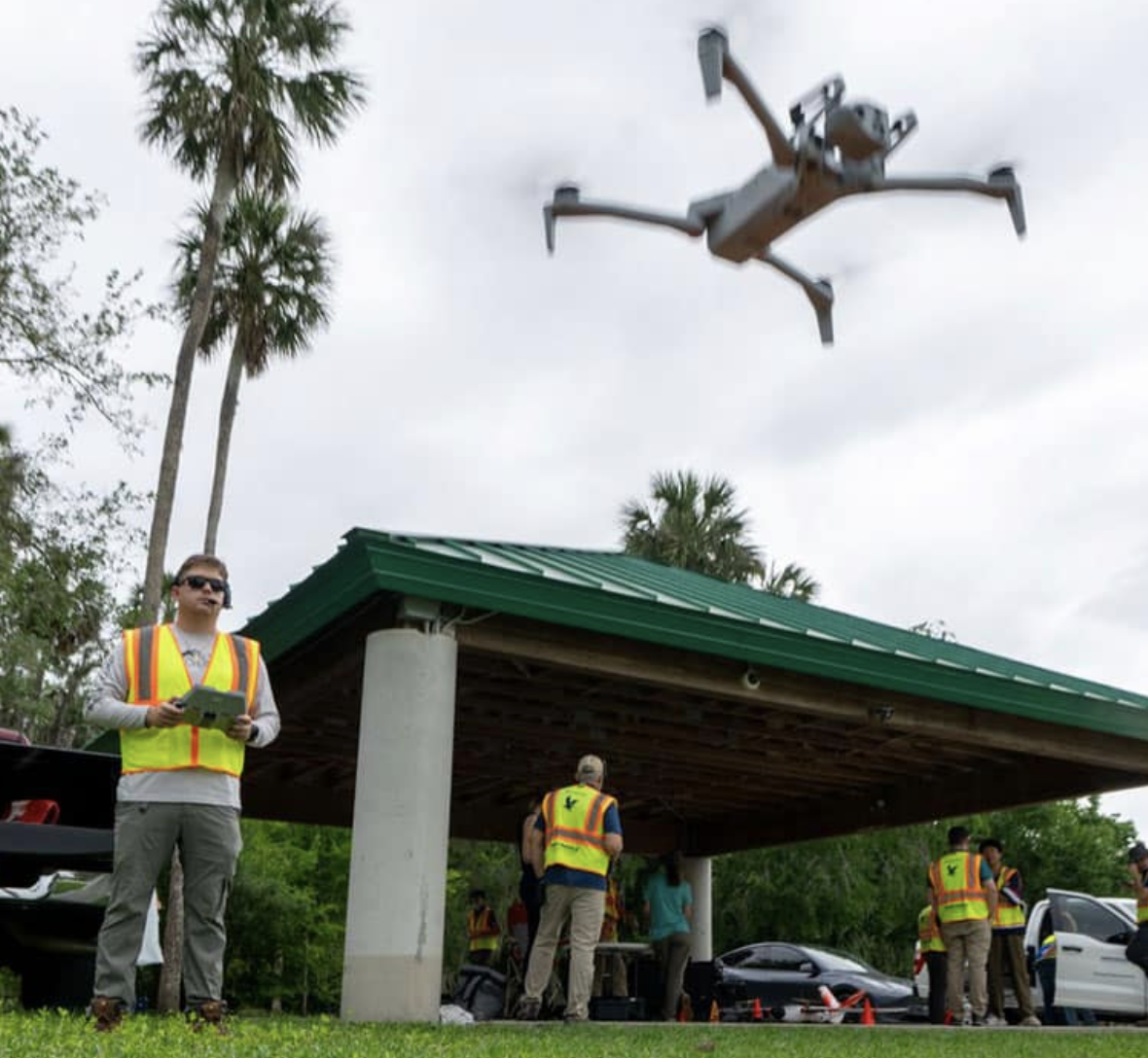Featured NewsTrending NewsDrone EducationHigher Learning: Warren County CC and Embry-Riddle Team Up for Intensive Drone Workshop

Above photo: Embry-Riddle instructors David Thirtyacre and Scott Burgess finish set-up and inspection of flight training area prior to the day’s activities.
VISIT WARREN COUNTY COMMUNITY COLLEGE AT BOOTH 114 @ COMMERCIAL UAV EXPO 2022
6 September 2022
Top students from two leading college drone training programs just completed a comprehensive two-day combined operations flight training exercise featuring a range of theoretical topics and hands-on experience with photogrammetry in a mock emergency and drone flights to the edge of visual line of sight research in precise navigation and situational awareness to testing various heat-sensing cameras.
“It was an amazing experience,” says Amanda Moberg, a recent graduate of Warren County Community College’s unmanned aircraft system (UAS) program, who was one of the Warren graduates participating in the workshop. It was hosted by Embry-Riddle Aeronautical University (ERAU) at that school’s training facility about a mile from the Daytona Beach International Airport.
“They covered an incredible number of practical, important topics," adds Moberg.
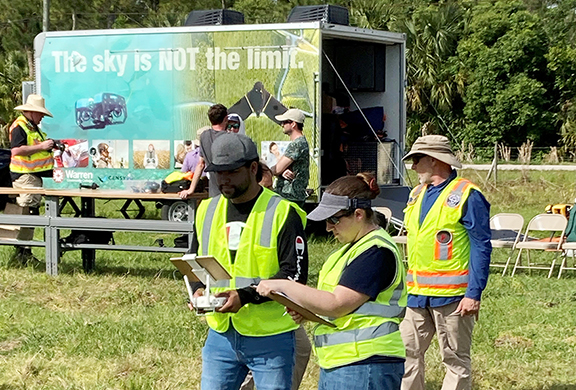
Above: Amanda Moberg, WarrenUAS graduate and TOP certified Remote Pilot Instructor, works with student pilot to conduct practical Flight Assessment.
Alfreda Johnson—who is nearing completion of her Masters in Unmanned Systems from ERAU—says the training gave her an even broader view of what she can do in the profession.
“I haven’t been certain about my career plans with drones because there are so many opportunities, and this training highlighted so many more,” she says. “There was just something about drones that fascinated me. I was amazed at the areas where drones were being used.”
Johnson became interested in drones about six years ago, as she worked on community events and special projects in the Little Rock schools, where she is employed supporting school IT. She is also interested in how drones can be used in emergency situations, and she has begun working with the area Civil Air Patrol.
Moberg was particularly struck at the recent workshop by the opportunity to fly drones in a new location close to an airport, as well as study the restrictions and concerns that come with that proximity.
“For all the students, this program was filled with challenging, real-world experience, which made it very useful,” she says. “When you fly in a new place, nothing is familiar, so there is a whole new set of variables that you have to think through—which is important in this line of work.”
Moberg—who is certified to offer training in drone flight and evaluate pilots for certification—plans to receive her bachelors from ERAU, and she is considering a career as an instructor in the field. She said the opportunity she had to work with Embry-Riddle professors as they evaluated students for their remote pilot operator certification was very valuable.
Wide-Ranging Topics
Joseph Cerreta—associate professor in the college of aeronautics at Embry-Riddle and lead instructor for the training—says the intensive exercise is designed to introduce the students to a wide range of practical scenarios and the latest equipment with hands-on experience. He explained that it included lectures and discussions, training exercises with a variety of equipment, and individual and group research reports on key UAS topics. It is part of the university’s drone degree program, which offers three undergraduate and four master’s degree tracts and is accessible to students throughout the year, almost entirely online. Warren students generally enroll in the fall for two years of training, and will soon do it in a new drone and robotics center on the campus.
Warren President Will Austin—who is a pilot and helped assist in the training—says the breadth of the student work at the workshops is unlike most training in the industry, with participants solving unscripted real-world issues through practical exercises and relevant research.
“They get experience with all sorts of equipment in a variety of circumstances, but really have to understand the technology behind the operations and the theory involved to demonstrate an understanding of it,” he says.
Austin noted the workshop is one of the several ways the two top drone programs have begun collaborating. They have established a seamless pathway for students in Warren’s two-year program to move on to receive a bachelor’s from Embry-Riddle, and have structured a network that allows for the exchange of faculty and research and collaborative educational sessions.
“This workshop is another great opportunity for our students that has grown out of this partnership with Embry-Riddle,” says Austin. “They have a chance to participate in this sophisticated, real-world live scenario training, which allows them to both demonstrate and hone the key skills they have learned in our program. But they also are exposed to an array of new technology and ideas from the top aeronautics university in the country and can collaborate with other leading students and faculty in this growing field.”
Cerreta explained that the exercise, where students stay nearby for the two days and collaborate closely in discussions and research, was designed to cover basic-to-advanced aircraft controls, both manual and automatic. It also covered checklist and emergency procedures, flight planning, review of platform-specific traits, aerial photography, post-flight processing techniques, pilot application, and crew resource management.
“The students examine critical elements of regulations and safety, while using examples of basic and advanced controls, maneuvers and procedures, he says. “They learn to employ best practices and unmanned airmanship skills while avoiding prohibited actions and safely launching and operating the vehicles. We pack a lot in, but the students find it useful and very practical for their work in the industry.”
The workshop includes practice with Embry-Riddle’s own simulation software, which, according to Cerreta, allows for “powerful simulation with five graded simulation assignments.” The students are then assessed in real flying exercises with specific tasks, which they must showcase in a video of their work.
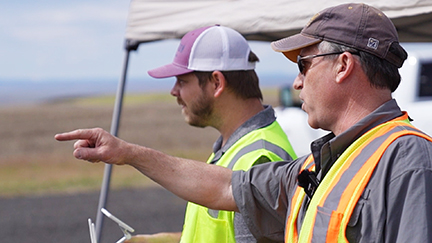
Above: David Thirtyacre (right), department head and Air Boss for the operations explains a live flight exercise to student Robbie Hubler.
Specific Assignments
Austin was particularly impressed with the three specific exercises the training provided for students:
“In one, they were asked to navigate above heat-radiating items placed in cylinders to assess and compare three types of thermographic cameras and then report on their findings,” says Cerreta. "Another required the students to fly over a simulated accident scene where they had to take measurements from the air between certain control points with different cameras, then compare that data to ground measurements they also collected. It meant students had to use flight planning and operations and their knowledge of data and statistics.
“This exercise grew from work Embry-Riddle did with the Daytona Beach Police Department on a homicide investigation, where we were brought in to measure distances between key locations and bits of evidence and collect other information from the scene. The police used three officers on the ground for three hours to gather 120 data points, while we were able to collect two million data points with a remote pilot and visual observer working for 24 minutes with drones. That’s something we reviewed with the students that got their interest.”
One other exercise gave students an opportunity to fly beyond visual line of sight (BVLOS). Warren and Embry-Riddle are among the very few higher education institutions to have received FAA BVLOS waivers, so their students have the opportunity to experience that real-world scenario.
“We were able to fly higher and further than I ever have," says Johnson. "I have to say, that was at first intimidating, but doing it gave me so much more confidence about my skills.”
Students learned techniques for BVLOS flight and studied variations in the type of aircraft and its color and shape in connection with flight when vehicles are difficult or impossible to see. Austin and Cerreta noted that other collaborative efforts on both campuses are planned to enhance the institutional and instructor knowledge, and provide valuable training opportunities for students.
Cerreta will travel to Warren this summer to review their learning materials, share thoughts about best practices, review Warren’s AUVSI TOP Training procedures and aviation documents, and provide guidance to the Warren faculty about program enhancements. One of the significant goals of the collaboration is to develop a seamless transferable associate’s degree that can provide standardized learning outcomes so future employers know what they can expect from graduating pilots and UxS technicians.
Click to get more Details about the Warren and the Embry-Riddle training programs.
